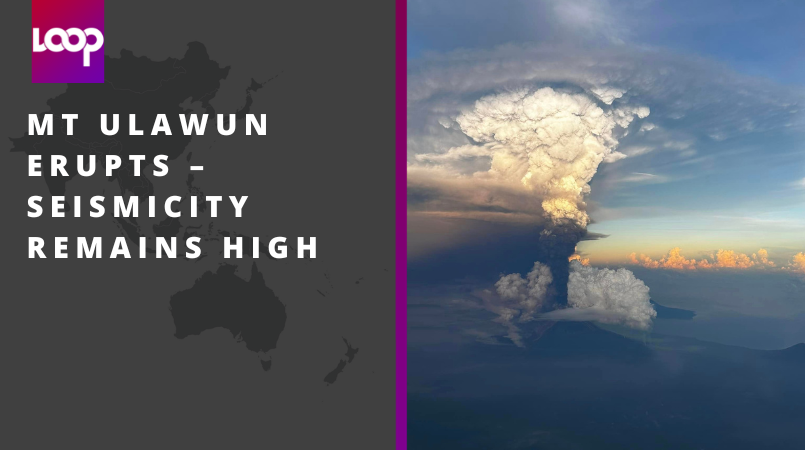
The eruption at Ulawun, West New Britain, Papua New Guinea, which started on 20th November between 03:30pm and 04:00pm persists with no signs of abating.
A report from the Department of Mineral Policy and Geohazards Management states that originally the ash plume was blowing towards the west and northwest with ash fall affecting the Navo area. However, it has now shifted direction, impacting the Ulamona Mission area due to a change in wind direction.
The maximum height of the ash plume remains a concern, posing potential risk to areas in the west to north-northwest direction.
Communities in these areas are experiencing moderate to high exposure to ash fall.
The report states that variable southeasterly winds continue to influence the ash plume's trajectory, adding complexity to the affected regions.
Seismicity remains at a high level, displaying a slight reduction in the upward trend.
The eruption shows no signs of subsiding, and the ongoing increase in seismic activity suggests a prolonged event. Experts anticipate the eruption to persist indefinitely.
Given the sustained volcanic activity, the geohazards management division has strongly advised to upgrade the Alert level to Stage 4 to ensure heightened preparedness.
The Rabaul Volcano Observatory (RVO) is actively monitoring seismicity and all reported activities. Updates will be provided promptly, including any amendments to the prognosis.
